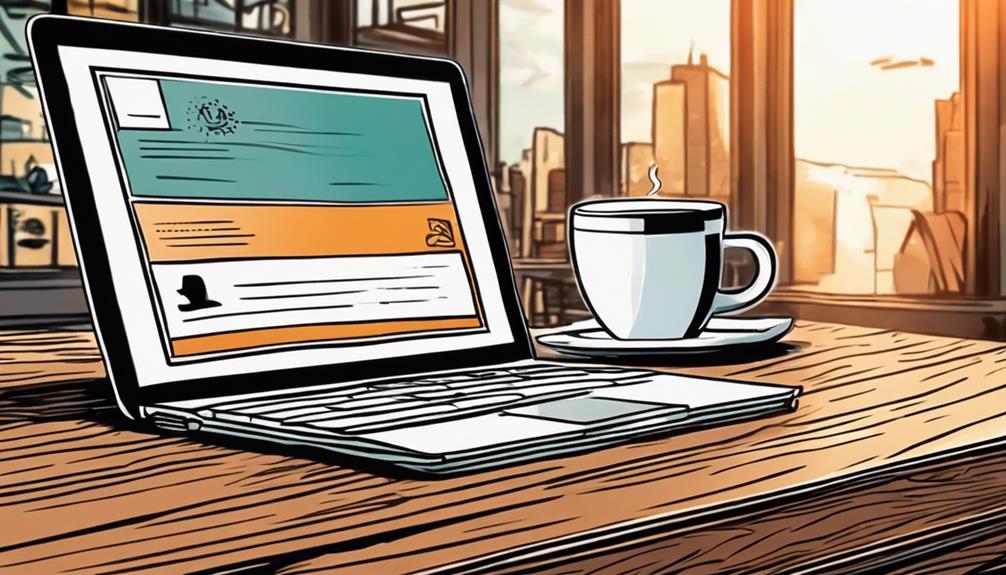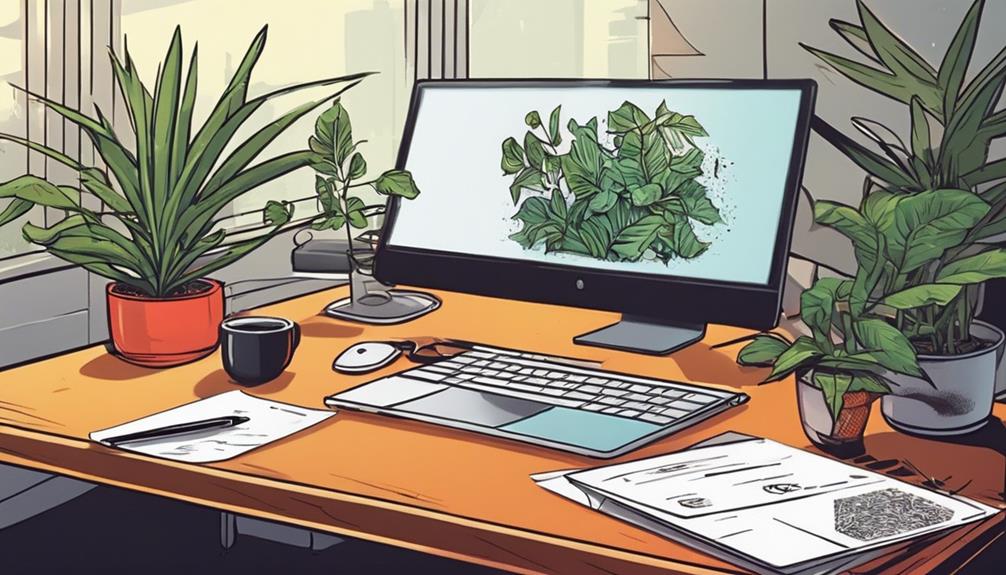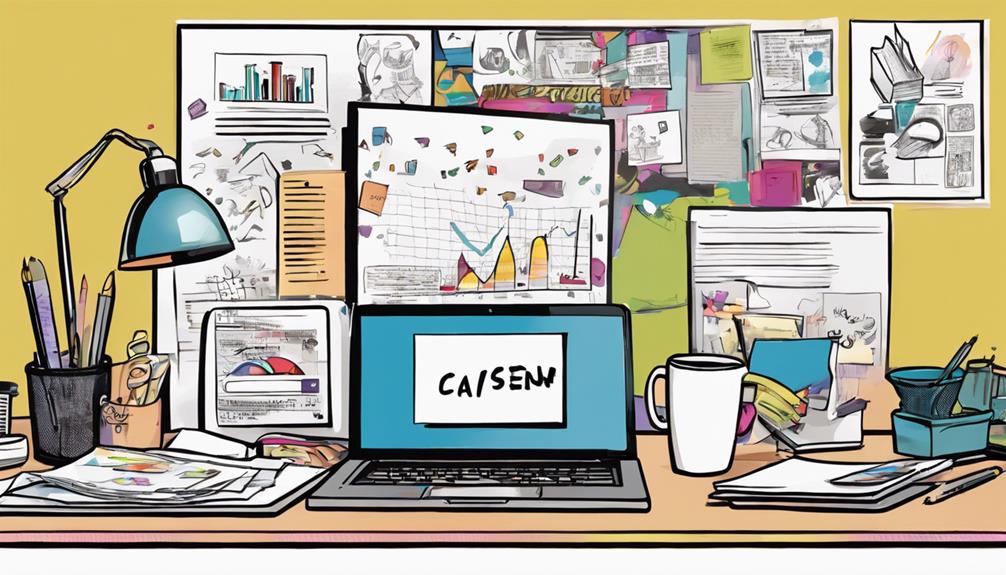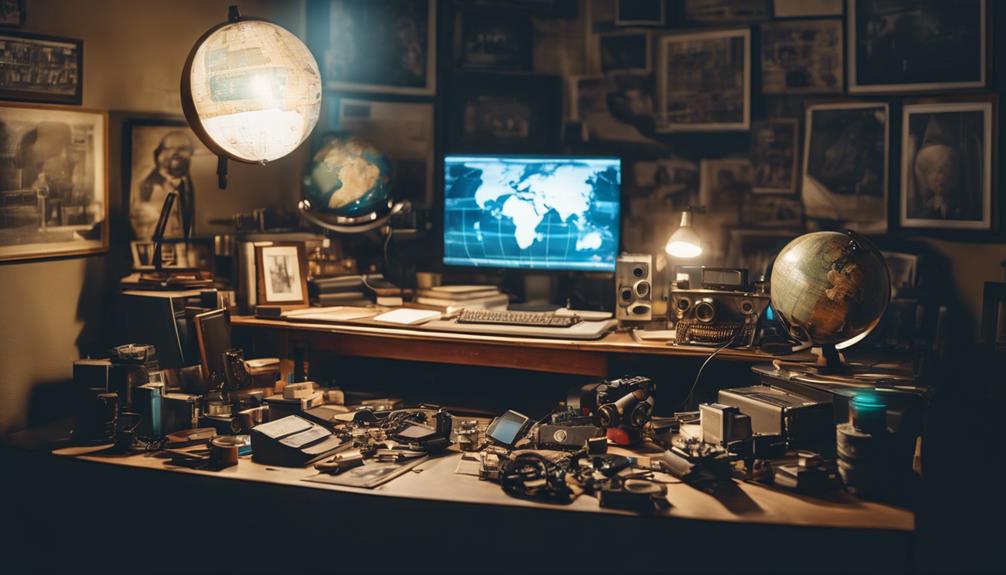Business cards are crucial for unlocking networking potential and boosting your professional identity. They establish meaningful connections in a competitive market and encourage future engagements. An effectively designed card should showcase harmonious colors and a clear presentation of your name, job title, and contact details. Sharing cards generously at events and enclosing them in communications can simplify future follow-ups. Keep in mind the tactile aspect; distinctive textures can create a memorable impression. For optimal results, staying organized and being generous in sharing your cards are essential. Delve deeper to uncover more strategies for maximizing the impact of your business cards in achieving networking success.
Key Takeaways
- Business cards foster memorable connections, crucial for standing out in competitive networking environments.
- A well-designed card with clear information enhances brand recognition and facilitates easy follow-up.
- Distributing cards at events and meetings maximizes networking opportunities and expands professional reach.
- Incorporating cards into correspondence keeps your brand front-of-mind and encourages further engagement.
Importance of Business Cards

Business cards are crucial tools in networking, serving as tangible representations of professional identity and facilitating memorable connections in a competitive business landscape. They function as concise introductions that encapsulate an individual's professional persona, making it easier for potential clients and collaborators to remember and identify them.
While they cannot convey the entire narrative of a business, their primary purpose is to create a lasting impression that encourages future interactions. In an era where digital communication often prevails, business cards offer a personal touch, enhancing the emotional connection between individuals.
Their portability and ease of distribution make them invaluable for networking, ensuring that opportunities for collaboration and partnership are never missed. Consequently, business cards remain a crucial component of professional engagement.
Key Design Features

Effective design features of a business card greatly enhance its ability to make a memorable impression and communicate essential information clearly.
The choice of color plays a pivotal role; vibrant hues can attract attention for creative industries, while subdued tones convey professionalism in more traditional fields.
A well-placed logo should dominate the card, ensuring immediate brand recognition.
Simplicity is vital; overcrowding with excessive information detracts from key elements.
Opting for one or two complementary colors fosters a cohesive look, while legible typefaces enhance readability.
Additionally, incorporating unique textures can create a tactile experience that leaves a lasting impact.
Ultimately, thoughtful design choices reflect the identity of the individual or business, aiding in effective networking.
Information That Matters

Essential information on a business card includes the individual's name, title, company name, and contact details, ensuring immediate recognition and facilitating communication. This information is vital for establishing a professional identity and fostering networking opportunities.
| Information Type | Importance |
|---|---|
| Name | Personal identification |
| Title | Professional role clarity |
| Company Name | Brand recognition |
| Contact Details | Easy follow-up communication |
| Email Address | Quick digital correspondence |
Maximizing Card Usage

Maximizing the usage of business cards can greatly enhance networking opportunities and foster meaningful connections in professional settings.
To achieve this, distribute cards generously at industry events, conferences, and meetings, ensuring that potential clients and collaborators remember your contact information.
Incorporate cards into all forms of correspondence, such as emails and packages, to increase visibility.
Additionally, keep your business cards organized and accessible in a dedicated case, allowing for quick sharing without fumbling.
Encourage others to pass along your cards, expanding your reach through their networks.
Professional Design Tips

Creating a visually appealing business card is essential to making a lasting impression, as it reflects both your personal brand and the professionalism of your business.
To achieve this, consider hiring a professional designer who understands your vision. Limit your color palette to one or two complementary colors to guarantee a cohesive look.
Prioritize simplicity by focusing on key elements: your name, title, and contact information should be clear and legible. Utilize a readable typeface that aligns with your brand identity.
Additionally, incorporate your logo prominently, as it serves as a visual anchor. Always keep your target audience in mind, tailoring design choices to resonate with their preferences and expectations.
This strategic approach enhances your networking potential considerably.
How Can Business Cards Help in Building Strong Business Partnerships?
Business cards are a powerful tool for cultivating and nurturing the power of business partnerships. By exchanging business cards, professionals can establish a tangible connection and create a lasting impression. This simple act can help in initiating, strengthening, and maintaining business relationships, leading to mutually beneficial collaborations.
Conclusion
In the vast garden of professional relationships, business cards serve as seeds, each containing the potential for fruitful connections.
When nurtured through thoughtful design and strategic distribution, these seeds can blossom into opportunities for collaboration and growth.
The careful selection of essential information acts as sunlight, illuminating the path toward meaningful engagement.
Ultimately, the artful cultivation of business cards transforms the networking landscape, fostering an environment where relationships can thrive and flourish, yielding a bountiful harvest of professional success.









